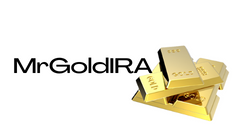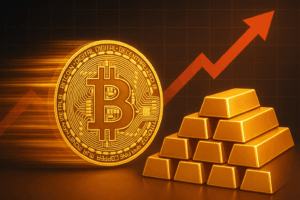
Bitcoin's Price Analysis
The price of bitcoin is currently hovering just above the $38K range after a bullish trading day on Tuesday. This surge in price follows U.S. Federal Reserve Governor Chris Waller's dovish speech. Bitcoin's 24-hour range has been between $37,156 to $38,450, and it currently boasts a market capitalization of approximately $745 billion.
Examining Oscillators and Moving Averages
An in-depth analysis of oscillators and moving averages reveals a compelling narrative for bitcoin's current market position. Oscillators, which are key tools for identifying market momentum, are currently indicating neutral signals. This suggests a stable market condition without any overbought or oversold conditions. Simultaneously, moving averages across various time frames are unanimously signaling optimistic sentiment. This indicates the potential for a sustained bullish trend for bitcoin.
Oscillators and Market Dynamics
Oscillators, including tools like the relative strength index (RSI), Stochastic, and commodity channel index (CCI), provide insights into Wednesday's market dynamics. The RSI, currently at 62, firmly sits in neutral territory. This negates any immediate signs of overvaluation or undervaluation. The Stochastic and CCI readings of 78 and 166, respectively, also signal a balanced market state without immediate pressure for price correction.
Moving Averages and Long-Term Trends
The exponential moving average (EMA) and simple moving average (SMA), critical indicators for assessing long-term bitcoin price trends, are showing strong bullish signals across multiple time frames. The 10-day EMA and SMA stand at $37,478 and $37,421, slightly below the current price, reaffirming the positive sentiment. Similarly, the 20-day EMA and SMA, at $36,876 and $37,125, reinforce this bullish outlook, suggesting the possibility of continued upward momentum.
An examination of the longer-term moving averages further cements the positive outlook for BTC. The 50-day EMA and SMA, recorded at $34,571 and $34,120, are well below the current price, indicating that the mid-term trend is firmly in favor of the bulls. The 100-day and 200-day moving averages, traditionally seen as indicators of long-term market sentiment, also present a unanimous bullish signal, with values significantly lower than the current market price.
Overall Market Analysis
The unanimous signals across all major moving averages underscore a strong and enduring positive trend in the bitcoin market. This trend is not just a short-term spike but a sustained movement, as evidenced by the consistency in the indicators across the 30, 50, 100, and 200-day averages. The analysis of both oscillators and moving averages paints a picture of a stable yet growing market. While the neutral stance of oscillators calls for cautious optimism, the overwhelming bullish signals from the moving averages provide a strong foundation for the current price levels.
Bull Verdict:
The current neutral readings from oscillators such as RSI, Stochastic, and CCI suggest a well-balanced market, free from overextension. This stability, combined with the consistent buy signals across all major moving averages, indicates a robust bullish trend.
Bear Verdict:
Despite the overall bullish indicators, a cautious approach leads to a bearish verdict. While oscillators show a neutral market, this can also be interpreted as a lack of strong bullish momentum, potentially signaling a plateau in price movement. The proximity of current prices to the short-term moving averages (10-day and 20-day) may suggest limited room for significant upward movement in the near term.
Register your email here to receive weekly price analysis updates directly to your inbox:
What are your thoughts on bitcoin's market action on Wednesday morning? Share your opinions in the comments section below.
Frequently Asked Questions
How to open a Precious Metal IRA
First, decide if an Individual Retirement Account is right for you. Open the account by filling out Form 8606. Next, fill out Form 5204. This will determine the type of IRA that you are eligible for. This form must be submitted within 60 days of the account opening. Once you have completed this form, it is possible to begin investing. You can also contribute directly to your paycheck via payroll deduction.
To get a Roth IRA, complete Form 8903. Otherwise, the process will be identical to an ordinary IRA.
To qualify for a precious Metals IRA, there are specific requirements. The IRS stipulates that you must have earned income and be at least 18-years old. You cannot earn more than $110,000 annually ($220,000 if married filing jointly) in any one tax year. Contributions must be made on a regular basis. These rules apply to contributions made directly or through employer sponsorship.
A precious metals IRA can be used to invest in palladium or platinum, gold, silver, palladium or rhodium. But, you'll only be able to purchase physical bullion. This means you won't be allowed to trade shares of stock or bonds.
Your precious metals IRA may also be used to invest in precious-metal companies. This option is offered by some IRA providers.
However, investing in precious metals via an IRA has two serious drawbacks. First, they don't have the same liquidity as stocks or bonds. This makes them harder to sell when needed. They don't yield dividends like bonds and stocks. Therefore, you will lose more money than you gain over time.
Can the government steal your gold?
Your gold is yours and the government cannot take it. You earned it through hard work. It belongs exclusively to you. There may be exceptions to this rule. If you are convicted of fraud against the federal government, your gold can be forfeit. Also, if you owe taxes to the IRS, you can lose your precious metals. However, even though your taxes have not been paid, you can still keep your precious metals, even though they are considered the property of United States Government.
How Does Gold Perform as an Investment?
The price of gold fluctuates based on supply and demand. Interest rates are also a factor.
Due to their limited supply, gold prices fluctuate. You must also store physical gold somewhere to avoid the risk of it becoming stale.
What is the tax on gold in Roth IRAs?
An investment account's tax rate is determined based upon its current value, rather than what you originally paid. If you invest $1,000 into a mutual fund, stock, or other investment account, then any gains are subjected tax.
But if you put the money into a traditional IRA or 401(k), there's no tax when you withdraw the money. You pay taxes only on earnings from dividends and capital gains — which apply only to investments held longer than one year.
These accounts are subject to different rules depending on where you live. Maryland's rules require that withdrawals be taken within 60 days after you turn 59 1/2. Massachusetts allows you up to April 1st. New York has a maximum age limit of 70 1/2. To avoid penalties, plan ahead so you can take distributions at the right time.
Can I buy Gold with my Self-Directed IRA?
Although you can buy gold using your self-directed IRA account, you will need to open an account at a brokerage like TD Ameritrade. If you already have a retirement account, funds can be transferred to it.
The IRS allows individuals to contribute up to $5,500 annually ($6,500 if married and filing jointly) to a traditional IRA. Individuals can contribute up to $1,000 annually ($2,000 if married and filing jointly) directly to a Roth IRA.
If you do decide that you want to invest, it is a good idea to buy physical bullion and not in futures. Futures contracts can be described as financial instruments that are determined by the gold price. You can speculate on future prices, but not own the metal. However, physical bullion is real gold or silver bars you can hold in your hands.
How much of your portfolio should be in precious metals?
This question can only be answered if we first know what precious metals are. Precious metals are those elements that have an extremely high value relative to other commodities. This makes them very valuable in terms of trading and investment. Today, gold is the most commonly traded precious metal.
There are many other precious metals, such as silver and platinum. The price of gold fluctuates, but it generally remains stable during times of economic turmoil. It is also unaffected significantly by inflation and Deflation.
In general, prices for precious metals tend increase with the overall marketplace. However, the prices of precious metals do not always move in sync with one another. When the economy is in trouble, for example, gold prices tend to rise while other precious metals fall. Investors expect lower interest rate, making bonds less appealing investments.
In contrast, when the economy is strong, the opposite effect occurs. Investors are more inclined to invest in safe assets, such as Treasury Bonds, and they will not demand precious metals. These precious metals are rare and become more costly.
It is important to diversify your portfolio across precious metals in order to maximize your profit from precious metals investments. You should also diversify because precious metal prices can fluctuate and it is better to invest in multiple types of precious metals than in one.
What is the cost of gold IRA fees
A monthly fee of $6 for an Individual Retirement Account is charged. This includes account maintenance and any investment costs.
If you want to diversify, you may be required to pay extra fees. These fees will vary depending upon the type of IRA chosen. Some companies offer free checking, but charge monthly fees for IRAs.
Most providers also charge an annual management fee. These fees are usually between 0% and 1%. The average rate is.25% each year. These rates are usually waived if you use a broker such as TD Ameritrade.
Statistics
- (Basically, if your GDP grows by 2%, you need miners to dig 2% more gold out of the ground every year to keep prices steady.) (smartasset.com)
- Gold is considered a collectible, and profits from a sale are taxed at a maximum rate of 28 percent. (aarp.org)
- Indeed, several financial advisers interviewed for this article suggest you invest 5 to 15 percent of your portfolio in gold, just in case. (aarp.org)
- If you take distributions before hitting 59.5, you'll owe a 10% penalty on the amount withdrawn. (lendedu.com)
- You can only purchase gold bars at least 99.5% purity. (forbes.com)
External Links
investopedia.com
- Do You Need a Gold IRA to Get Retirement?
- What are the Options? Types, Spreads, Example, and Risk Metrics
cftc.gov
finance.yahoo.com
bbb.org
How To
Guidelines for Gold Roth IRA
It is best to start saving early for retirement. As soon as you become eligible, which is usually around age 50, start saving and keep it up throughout your career. To ensure sufficient growth, it is vital that you contribute enough each year.
Also, you want to take advantage tax-free options such as a traditional 401k, SEP IRA or SIMPLE IRA. These savings vehicles permit you to make contributions, but not pay any tax until your earnings are withdrawn. These savings vehicles are great for those who don't have access or can't get employer matching funds.
It's important to save regularly and over time. If you aren't contributing the maximum amount permitted, you could miss out on tax benefits.
—————————————————————————————————————————————————————————————-
By: Jamie Redman
Title: Bitcoin Technical Analysis: BTC Bulls Aim to Break Upper Resistance
Sourced From: news.bitcoin.com/bitcoin-technical-analysis-btc-bulls-attempt-to-break-upper-resistance/
Published Date: Wed, 29 Nov 2023 13:15:57 +0000
Related posts:
 Ethereum Technical Analysis: ETH’s Bullish Streak Meets Oscillator Caution
Ethereum Technical Analysis: ETH’s Bullish Streak Meets Oscillator Caution
 Bitcoin, Ethereum Technical Analysis: Market Holds Its Breath for Fed’s Upcoming Policy Decision
Bitcoin, Ethereum Technical Analysis: Market Holds Its Breath for Fed’s Upcoming Policy Decision
 Bitcoin Technical Analysis: Bulls Eye $38K Amid Stiff Resistance
Bitcoin Technical Analysis: Bulls Eye $38K Amid Stiff Resistance
 Bitcoin Technical Analysis: BTC Price Holds Above $35,000 But Momentum Slows
Bitcoin Technical Analysis: BTC Price Holds Above $35,000 But Momentum Slows










